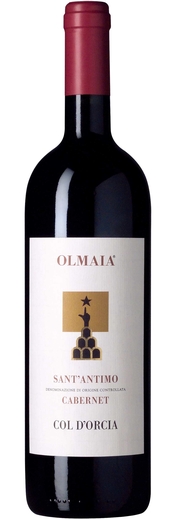 Zoom tasting of his wines recently, dozens of us showed up to taste his 2016 Brunello di Montalcino, 2013 single-vineyard Brunello di Montalcino Riserva and 2015 Cabernet.
Zoom tasting of his wines recently, dozens of us showed up to taste his 2016 Brunello di Montalcino, 2013 single-vineyard Brunello di Montalcino Riserva and 2015 Cabernet.
The Brunello wines are unquestionably stunning, especially the 2013 Poggio al Vento Riserva. But Col d’Orcia’s Olmaia Cabernet Sant’Antimo DOC captured my imagination.
The late Filippo Di Belardino, my friend and everyone’s friend, spent his career importing Italian wines and speaking to others about them with the comic timing of a late evening talk show host. Discussing the misguided trend in the 1980s to include Cabernet Sauvignon in some Sangiovese-based Tuscan wines, Phil would say, “Using Cabernet in a Chianti Classico wine is like inviting your mother-in-law to live in your home: you think you’ve added just a minor amount of Cabernet, but before you know it, she has taken over the entire house!” The great super-Tuscan blends notwithstanding, Cabernet is a difficult fit in central Tuscany.
But Olmaia, a gorgeous 100% Cabernet Sauvignon wine, in fact hails from the hills of the Montalcino zone in central Tuscany. It comes from a single vineyard situated at 350 meters elevation in the Sant’Antimo DOC district, which happens to be identical to the Brunello di Montalcino zone. This wine fascinates me because it is unmistakably Cabernet Sauvignon and yet its style is thoroughly consistent with the great red Sangiovese wines of Montalcino — which is to say that it is not only Cabernet but also Montalcino..
Olmaia is a full-bodied Cab but it is also very harmonious. It is substantial but not powerful, and gentle rather than extracted. Its aromas and flavors include black cherry, blackcurrant, red plum, mint and other fresh herbs and just a whiff of a vegetal pepper note, along with cedar, vanilla, and minerally graphite. This wine carries its fair share of the grainy tannins you’d expect from Montalcino which here contribute to a gentle velvety texture. What strikes me about the tannins is their distribution within the wine: they emerge in your mouth very soon after the wine’s ripe, fruity entry and they hang steady all across your palate until you swallow. This tannin performance is similar to what I expect in a Brunello di Montalcino.
Count Francesco’s father planted Cabernet on the Col d’Orcia estate in 1984 to make an internationally recognizable wine that could find a market in the world outside of Tuscany. That was back in the days when so many Tuscan producers were blending Cabernet with Sangiovese. At Col d’Orcia, the Cabernet shone as a solo act, and today is one of the property’s proudest offerings.
To find an Italian Cabernet that can stand tall with Brunello do Montalcino is noteworthy. But I would feel remiss if I didn’t share a few thoughts on the two Col d’Orcia Brunello di Montalcino wines.
The 2016 Col d’Orcia Brunello di Montalcino ($60) is still young and will benefit from additional aging. Naturally it’s full bodied, chewy, minerally and robust. Compared to the 2013 Riserva, it tends toward the powerful side, more muscular. But it is not a monster: it has some delicacy and intricacy and the inherent balance to age beautifully.
The 2013 Col d’Orcia Poggio al Vento Brunello di Montalcino Riserva ($163) is simply a gorgeous Brunello. It is harmonious — a quality that in my book is akin to sainthood for a Tuscan Sangiovese. (In fact, I describe such wines as having grace.) Count Francesco noted that 2013, a small-quantity vintage, is one of those vintages that will show better and better with age because the elegance of the wine is more important than the structure. The wine’s other attributes seem mundane to mention — its red cherry and dry-earth aromas with emerging notes of tobacco, leather and mushroom; its silky texture; its concentration of fresh fruit; its thrust of energy across the palate to an enduring finish.
Olmaia Cabernet, 93 Points
2016 Brunello, 93
2013 Brunello Riserva, 95
